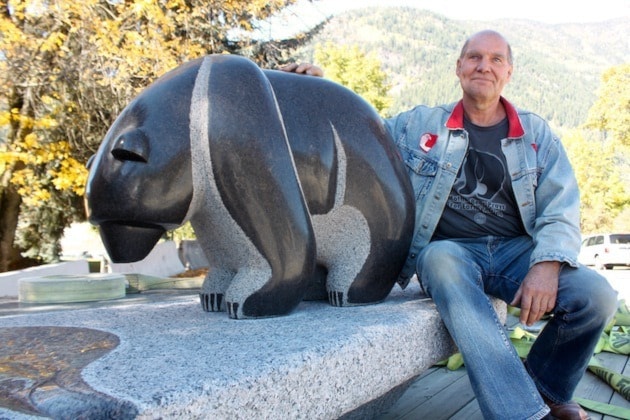We all know that Nelson is an artsy town — from the experience of living here and having to choose what to see and do on any weekend. We also know it from visitors and journalists across North American tooting our horn for us. What does that mean for the economic health of our community?
Back in 2003 an economic impact study of the arts in Nelson and area was conducted by a company calledCommonwealth Historic Resource Management Ltd.
Using a conservative approach that included visual arts (including crafts), performing arts, film/media arts, literary arts, and heritage — but excluded things like the economic impact of festivals, the part of the construction industry devoted to restoring and repairing historic buildings, attendance at our movie theatre, or music and art classes taught in schools — Commonwealth determined that the directly measurable net economic impact of the arts and heritage in Nelson was about $15 million, and that it supported around 580 full-time equivalent jobs.
The total net economic impact of arts and heritage was $75 million, mostly as a result of the “critical mass effect” that comes largely from the spending of tourists who are attracted to Nelson by our unique arts scene and the heritage appeal of our historic buildings. This net economic impact, they calculated, translated into a human impact of more than 2,900 full-time equivalent jobs in the area.
The gross economic impact of the arts and heritage in Nelson, which included spending that is not directly attributable to the existence of an arts economy, was estimated to be more than $198 million.
Commonwealth found that the people who principally benefitted from the arts economy in Nelson weren’t specifically the members of the arts community, but rather all residents of Nelson, particularly those in the hospitality industry who prosper through tourism spending. They concluded that if art and heritage didn’t exist at all in Nelson and area, there would be more than 10 jobs lost for every job directly connected to the arts that was lost.
This huge impact is just one reason why culture is one of our four pillars of sustainability (along with the environmental, social and economic sectors), and why we support our arts and culture as a city, through the Cultural Development Committee.
The Cultural Development Committee is a standing committee of the city made up of the executive directors of Nelson’s major cultural institutions as well as representatives from the education and tourism sectors, and citizens representing the musical, literary, dance, and aboriginal communities in town.
If you’re wondering what the CDC does, look no further than the rotating exhibit of beautiful sculptures we enjoy on Baker St., or the gorgeous stone bear bench in front of city hall that we have on loan from the artist.
The CDC acquires, inventories and helps maintain public art in Nelson, and guides council in the strategic planning and development of our community’s cultural sector in collaboration with other parts of the economy, such as businesses and education.
Always looking to build cultural capacity, the CDC also has several working committees tackling things like festival policy and resource sharing. The CDC is involved in promoting Nelson’s cultural charms to visitors near and far, plus provides the jury to assess the applications for the Columbia Basin Trust community initiatives grants that fall under the cultural category.
The CDC receives support from the city in the form of some staff time, a part time cultural development officer,and a percentage of building permit fees which often go towards renting or purchasing public art. Recently there have been some big changes at the CDC.
It welcomes Sydney Black as the new executive director of the Nelson and District Arts Council, and Brian Kalbfleisch and Star reporter Will Johnson as citizen representatives of the music and literary sectors respectively. Each of these individuals are deeply woven into our community’s rich cultural tapestry, and their energy, entrepreneurial spirit, and sheer ubiquity are great assets to us all.
That economic impact study was conducted 13 years ago, and our arts economy continues to grow and flourish with new venues like the Falls Music Lounge that recently opened in the refurbished Savoy hotel, the new Cottonwood market performing space to be built, the new flexible space at the top of Hall St., and fresh faces in leadership positions. Whether you’re personally into the arts or not, this growth is good for all of us!
Nelson city councillor Anna Purcell shares this space weekly with her council colleagues. Information on the Cultural Development Committee and the Path to 2040 sustainability plan can be found at nelson.ca. You can provide input on the new Cottonwood market design until Thursday. View the plans at bit.ly/1W6CVqN and bit.ly/1p5Gnac.
